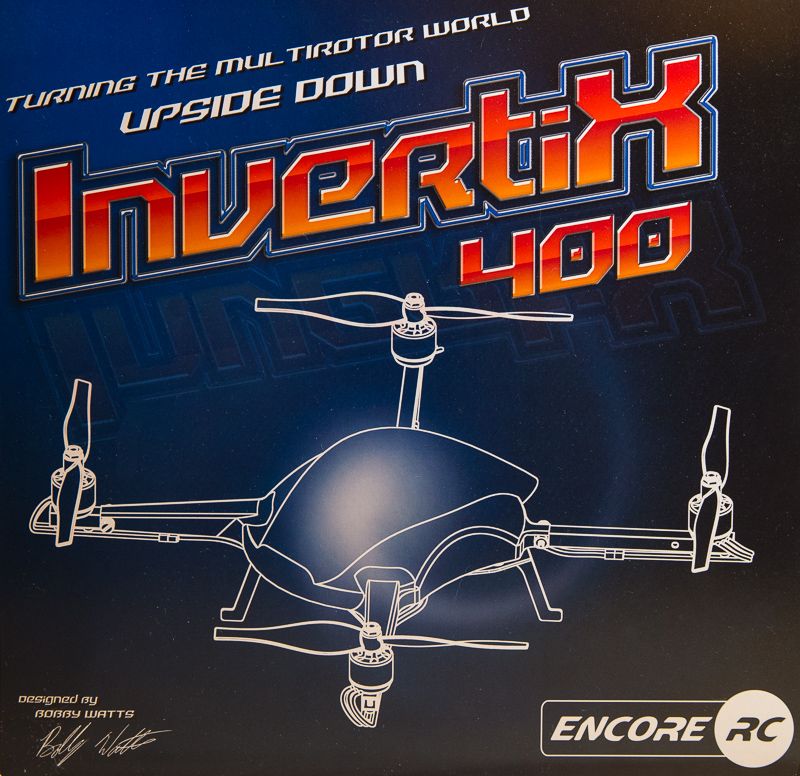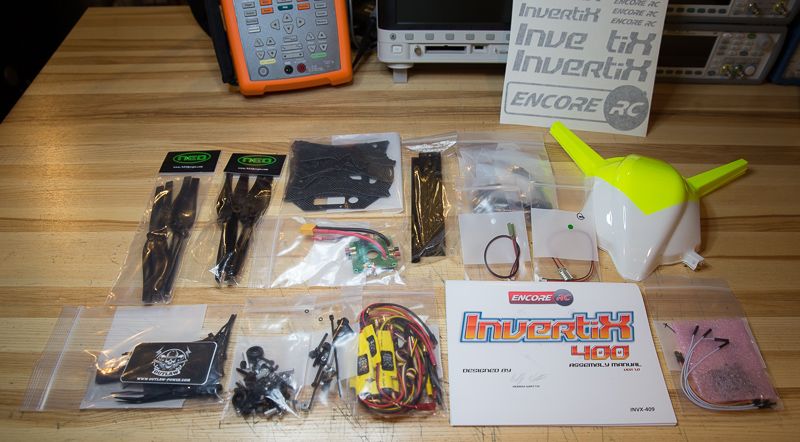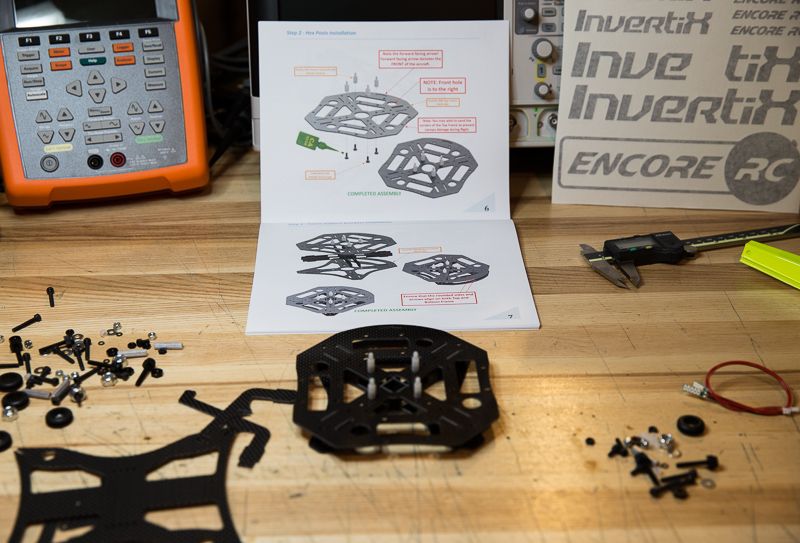econfly
Member

Do you think you have multirotor flying under control? Does manual mode lack the challenge and fun -- that bit of excitement -- it once had? If so, you need one of these.
The headline feature, as the name implies, is inverted flight. Upside down, sideways -- you name it, this thing can do it. I can't begin to illustrate the possibilities with my limited flying skills. Check out this example video with a pilot who makes it all look so easy:
The kit sells for $399.99 and includes everything you need apart from radio, receiver and battery. Recommended power is a 3s 2200-2600 mAh battery. I am using a Futaba 14SG radio, an R7008SB receiver, and a Turnigy 2200 3s Nano-Tech battery. Spectrum radios are supported, and any radio and receiver combination with the ubiquitous PWM output channels should work as well.
What you get is a well-designed carbon fiber frame, motors, two sets of props, ESCs, shell, and all needed hardware with spare parts and LED lighting. No soldering is required. You can be out of the box and flying in an hour or so, with build complexity no more difficult than that of a Lego kit.

The most difficult part of the build is mental. As noted in the excellent included manual and build guide, it is easy to incorrectly connect the ESCs to the motors. It's also easy to get it right with attention to detail.
The included flight controller is a NanoWii and is ready to go out of the box. I had no experience at all with the NanoWii before this review and I found the controller very easy to setup and understand. There are five input channels, including the usual four (A, E, R, and throttle), along with a fifth switch used to arm the controller. Put the arming channel on an easy to reach switch. If things get out of hand this allows for a quick shutdown of the motors.
The kit includes a very nice manual and build guide -- better than any manual for any RC product I own. It's a tremendously helpful document that allows anyone to build the model step-by-step. Here I am working my way through the build process.

In addition to the wonderful written documentation, EncoreRC produced an absolutely excellent build and flight example video. Supporting documentation and help of this quality are a real pleasure to see, particularly when so much of the RC world can't seem to be bothered with it. EncoreRC did an amazing job with these materials:
I like the design of this kit. The only issue I had was a broken landing leg on my third flight. To be sure, I crashed it (over and over again), so broken parts are not a surprise. In fact, the rig held up very well to my initial failed attempts to roll it and get inverted. The little landing legs, however, are just carbon fiber cutouts and susceptible to breaking if you work at it. I worked at it.
That is the fun of this thing. It's light enough that you can drop it in a grassy field without much or any damage. The MultiWii controller's arm/kill switch allows easy motor cut off if necessary. The videos make inverted flight look easy. It isn't, at least not for me. But I am having a lot of fun learning.
The unnatural (or maybe just unusual) part of flying the Invertix 400 is the motor direction change at mid-throttle. The model is started with the throttle at low and the arming switch off. You arm the model then raise throttle to just past midpoint. That spins up the motors. Once started, the throttle stick changes motor rotation when you move past the midpoint. Above 50% throttle is normal top-up flying, with higher throttle resulting in greater speed. Below 50% throttle the motors spin the opposite direction for inverted flight with lower throttle increasing the speed (the props are, of course, symmetric top-to-bottom and reversible). This takes a bit of mental acclimation, and particularly so for those accustomed to mid-stick being the hover point.
Overall this is an easy product to recommend to anyone who enjoys RC flying and wants to try something new. Even experienced multirotor pilots can improve their manual mode flying skills with the Invertix 400, and the inverted flying capability adds a level of complexity that is both fun and challenging, while remaining completely optional. With these capabilities, an easy to build kit, and excellent documentation and video resources, the Invertix 400 should be at the top of the list when thinking of a small, fun to fly quad, for entertainment or flying practice.
Last edited by a moderator:

